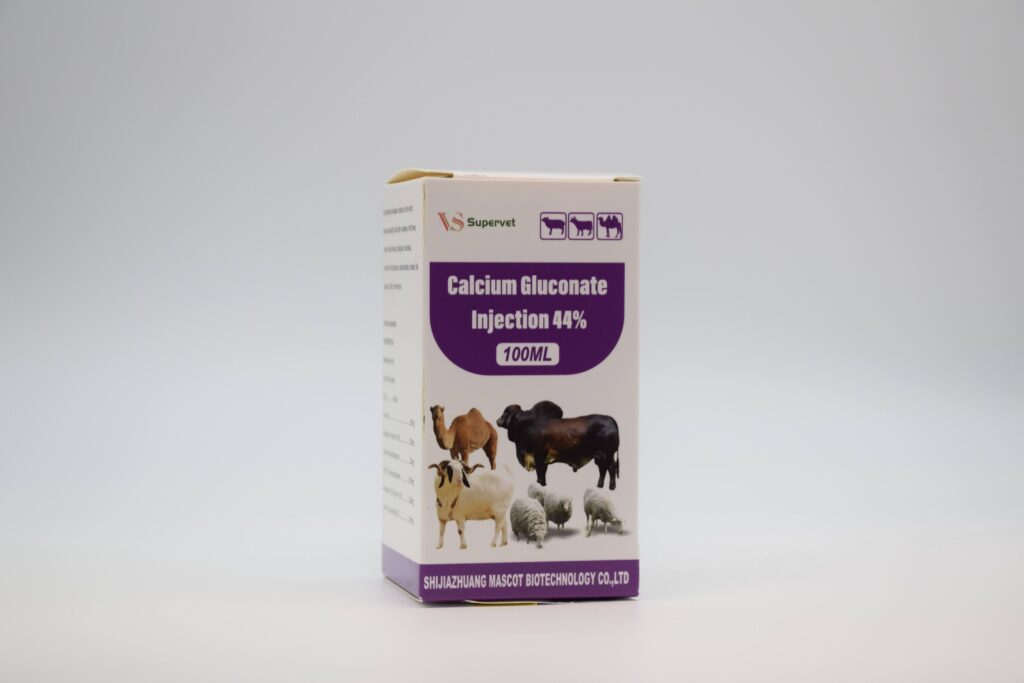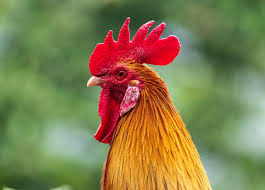
Calcium Gluconate
Brand Name:
Calcium Gluconate
Indications & Uses:
Growth & Yield
Dosage Forms:
Water Soluble Powder, Premix PowderTablets/Bolus, Liquid Solution, Injection Solution
Name:
Calcium Gluconate
Common Capacity:
- 50ml/bottle
- 100ml/bottle
- 500ml/bottle
- 1000ml/bottle
- 2kg/barrel (as an ingredient in “CALCIUMSBaEED FORCE”)
Calcium Gluconate may also be available as an ingredient in oral tablets, such as “Calcium Tablet,” usually supplied as 1g/tablet, 100 tablets/bottle .
Applicable Animals:
- Cattle (especially dairy cows): For treating or preventing periparturient paresis (milk fever) and hypocalcemia.
- Sheep and Goats: For treating hypocalcemia associated with pregnancy toxemia.
- Pigs: For correcting low-calcium-induced convulsions and skeletal development issues.
- Poultry: For preventing poor eggshell quality, decreased egg production, and leg weakness.
- Horses: For treating hypocalcemia, especially after stress or certain muscle disorders.
- Dogs and Cats: For treating postpartum hypocalcemia (eclampsia), rickets, osteoporosis, and certain drug intoxications.
- Aquatic Animals: May be added to feed as a calcium source to support bone and shell development.
- Special Farming Animals (e.g., rabbits, minks): For prevention and treatment of calcium deficiency.
Usage and Dosage:
The usage and dosage of Calcium Gluconate vary depending on the animal species, age, weight, severity of the condition, and product concentration. It is typically administered via injection (intravenous or intramuscular) or orally. Intravenous administration must be slow to avoid adverse cardiac reactions.
General Guidelines:
- Injectable Solution (Intravenous, intramuscular if necessary):
- Cattle (Dairy Cows):
- For treating periparturient paresis (milk fever): 100-500ml (typically 10%-20% solution), administered slowly intravenously. May be repeated as needed.
- For preventing periparturient paresis: Administer appropriate oral or injectable doses before and after calving.
- Horses: 50-200ml (10%-20% solution), administered slowly intravenously.
- Pigs, Sheep, Goats: 10-50ml (10%-20% solution), administered slowly intravenously or deep intramuscularly.
- Dogs and Cats:
- For treating eclampsia: 0.5-1.5ml (10% solution) per kg body weight, administered slowly intravenously. Often accompanied by continuous heart rate monitoring.
- For other hypocalcemic conditions: Dosage is adjusted based on specific diagnosis and blood calcium levels.
- Cattle (Dairy Cows):
- Oral Supplements/Tablets:
- Dogs and Cats (e.g., “Calcium Tablet”): According to product instructions and veterinary advice, typically 0.5-2 tablets (1g/tablet) daily, or adjusted based on body weight and specific needs.
- Poultry and Other Farm Animals: Added to feed, calcium addition levels are adjusted according to growth stage, production performance requirements, and feed analysis.
Dosage by Growth Stage:
- Young/Growing Animals: Calcium is essential for normal bone and tooth development. Deficiency can lead to rickets. Dosages will depend on growth rate and breed size, often given via oral supplements or solutions.
- Adult Animals (Non-breeding/Lactating): For maintaining bone health and daily physiological functions. Dosages are typically lower.
- Breeding/Pregnant/Lactating Animals: Calcium requirements significantly increase.
- Pregnancy: To ensure normal fetal bone development.
- Lactation: Large amounts of calcium are lost through milk, requiring higher supplementation to prevent hypocalcemia.
Applicable Diseases and Symptoms:
Calcium Gluconate is primarily used for the treatment and prevention of various hypocalcemic conditions and related symptoms:
- Hypocalcemia: Blood calcium levels below normal.
- Periparturient Paresis/Milk Fever (Cattle, Sheep, Goats): Acute hypocalcemia occurring after parturition due to massive calcium loss into milk, presenting as paralysis, lethargy, and decreased body temperature.
- Eclampsia (Dogs, Cats): Acute postpartum hypocalcemia due to lactation, manifesting as muscle tremors, tetany, and ataxia.
- Rickets (Young Animals): Softening and deformation of bones in young animals due to calcium or Vitamin D deficiency.
- Osteomalacia (Adult Animals): Decreased bone strength in adult animals due to calcium deficiency.
- Poor Eggshell Quality, Decreased Egg Production (Poultry): Calcium deficiency affecting eggshell formation and reproductive function.
- Muscle Tremors, Tetany, Convulsions: Calcium is an essential electrolyte for neuromuscular function.
- Antidote for Certain Poisonings: Such as oxalic acid poisoning, fluoride poisoning, where calcium can bind to the toxin.
- Adjunctive Treatment for Certain Allergic Reactions: Intravenous calcium is sometimes used to alleviate symptoms of acute allergic reactions.
Precautions:
- Administer Intravenously Slowly: Rapid intravenous injection can lead to severe cardiac side effects such as arrhythmias, cardiac arrest, especially in animals with pre-existing heart conditions.
- Injection Site Reactions: Intramuscular or subcutaneous injection may cause local irritation, swelling, or necrosis. Appropriate sites should be chosen, and aseptic techniques must be strictly followed.
- Recheck Blood Calcium Levels: During hypocalcemia treatment, blood calcium levels should be monitored to avoid hypercalcemia.
- Interactions with Certain Medications:
- Digoxin: Calcium may enhance the cardiotoxicity of digoxin; concurrent use should be avoided or used with extreme caution under close monitoring.
- Tetracycline Antibiotics: Calcium can interfere with the absorption of tetracyclines; oral co-administration should be avoided.
- Vitamin D: Vitamin D promotes calcium absorption and utilization and is often used in combination with calcium supplements.
- Storage: Store in a cool, dark place, protected from light. Keep out of reach of children and pets.
Contraindications:
- Hypercalcemia: Do not use in animals with known or diagnosed hypercalcemia.
- Cardiac Insufficiency: Animals with severe heart problems, especially those receiving digoxin, should use intravenous calcium with caution or it may be contraindicated.
- Renal Failure: Animals with impaired renal function may not excrete calcium effectively, increasing the risk of hypercalcemia.
Post-Administration Care:
- Monitor Animal Status: Closely observe the animal’s response after administration, particularly heart rate, respiration, and the alleviation of muscle tremors or convulsions.
- Keep Warm and Comfortable: Provide a comfortable, warm environment, especially for animals suffering from periparturient paresis or stupor.
- Provide Adequate Water and Nutrition: Encourage the animal to eat and drink, especially during recovery, to ensure they receive balanced nutrition.
- Environmental Management: For animals prone to hypocalcemia, such as high-producing dairy cows, optimize peripartum management and feed formulation to prevent recurrence.
- Long-Term Treatment: For chronic calcium deficiency or susceptible conditions, long-term oral calcium supplementation or feed reformulation may be required.
- Follow-up Examinations: Adhere to veterinary recommendations for regular follow-up examinations, including blood calcium level tests, to evaluate treatment efficacy and adjust dosages.
Applicable Animals
Animal species suitable for this veterinary medication




